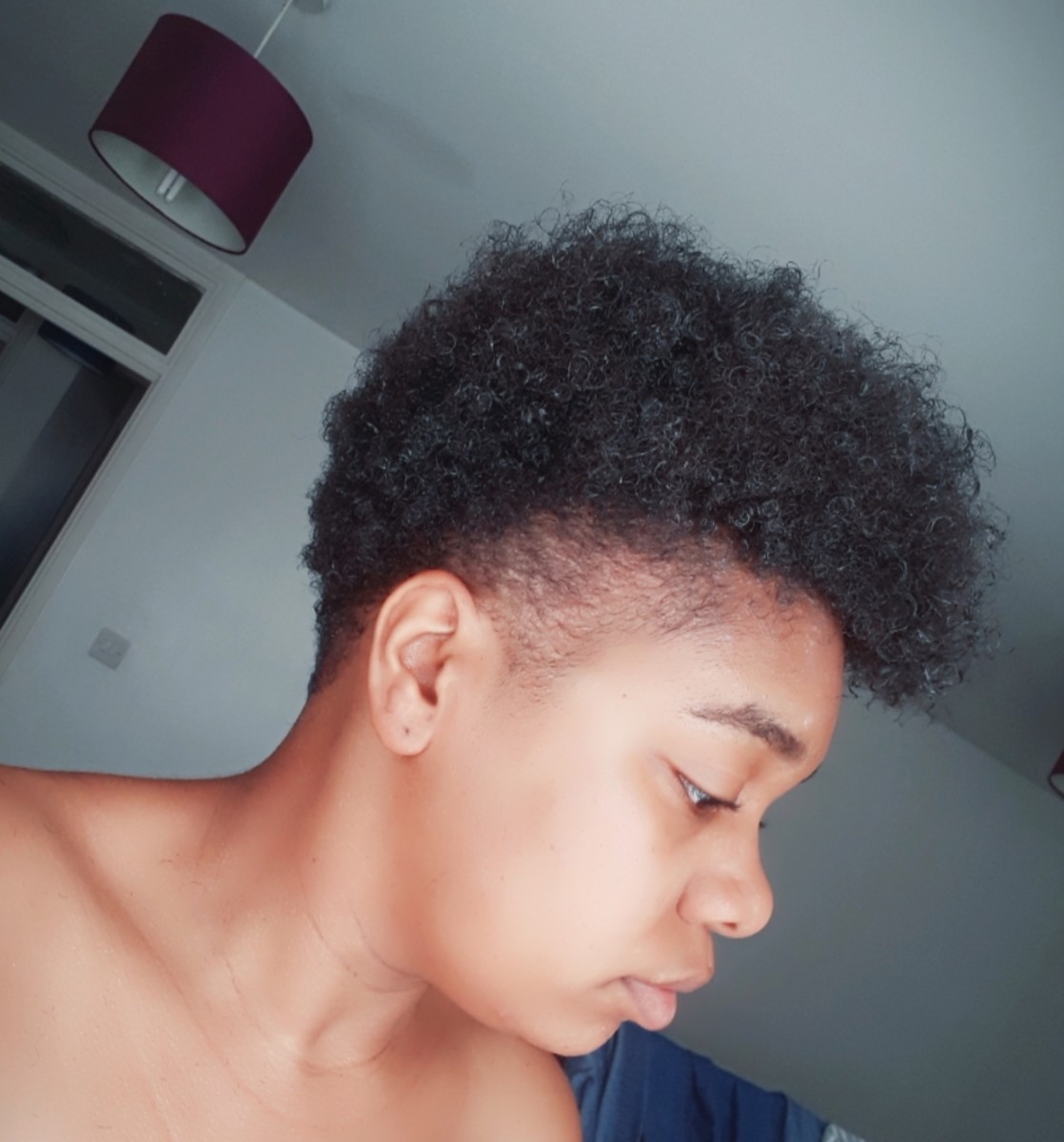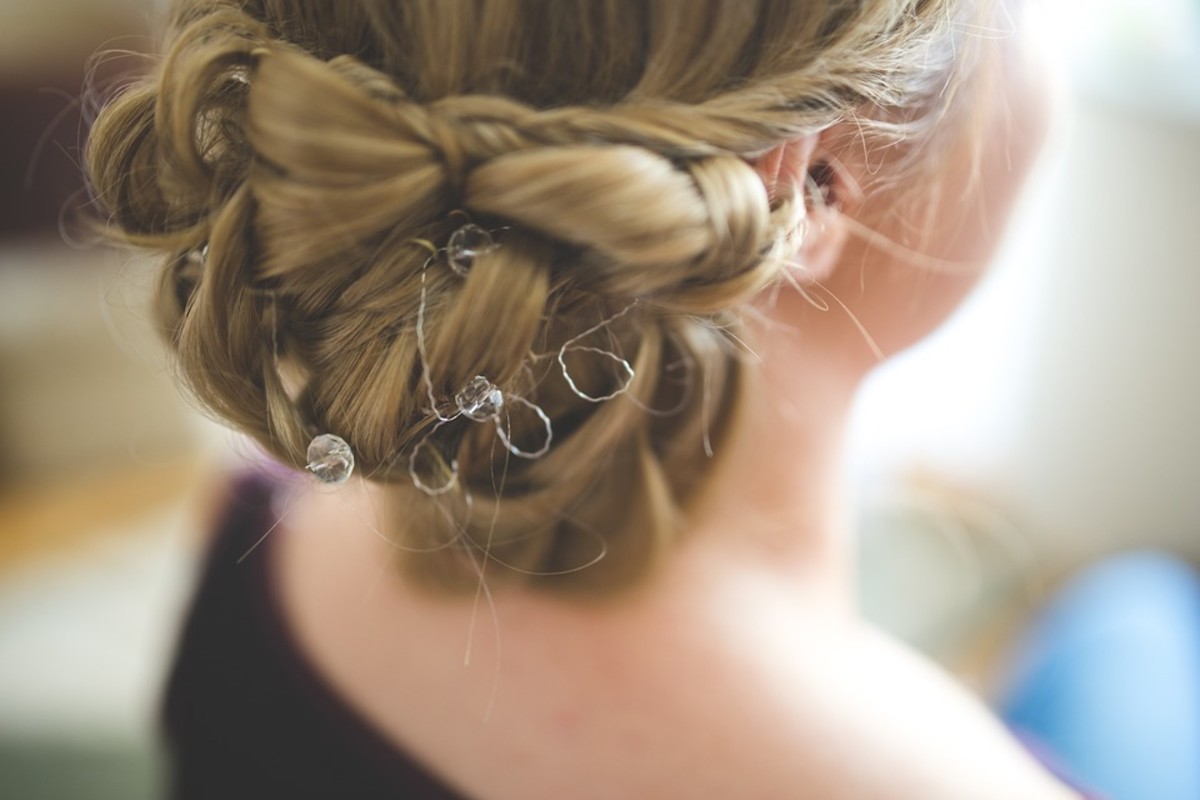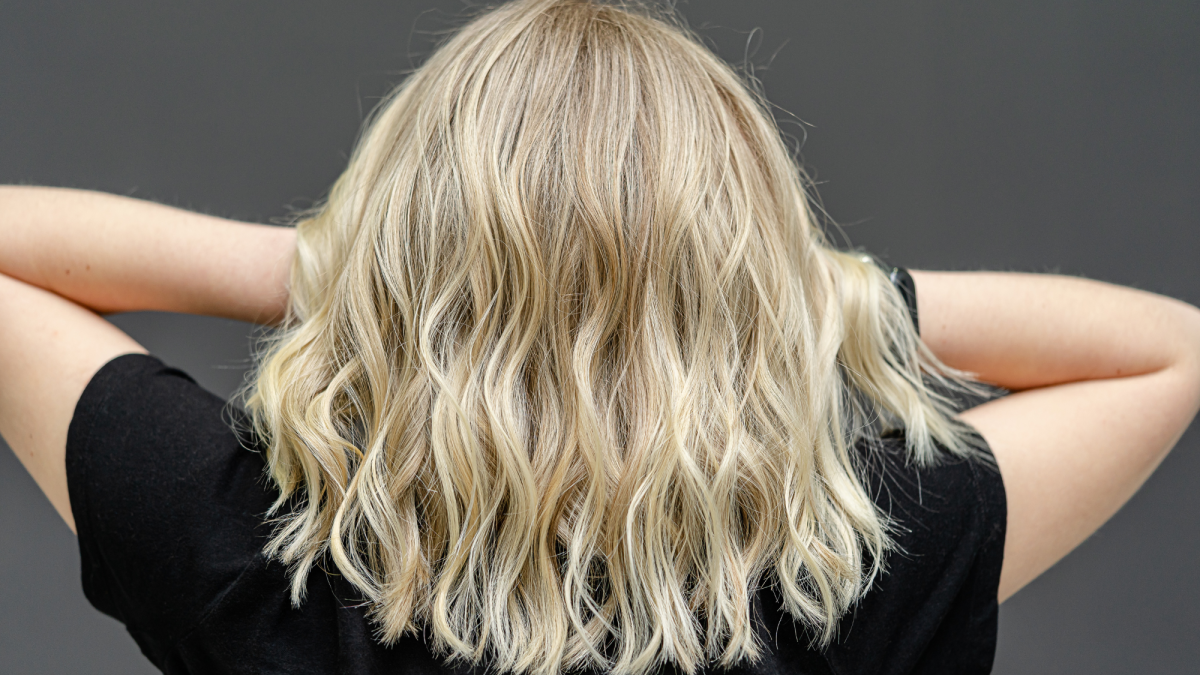How to Grow Long Hair Naturally (5 Tips Your Stylist Won't Give You)
What Is the Greatest Challenge in Growing Long Hair?
When most people think about growing long hair, they tend to worry about the rate of growth the most. Growing long hair is going to take time and patience. There's no question of that!
However, the greatest challenge in growing long hair is actually breakage.
If you've ever heard the advice that you should have your hair cut regularly in order to promote growth, this is because getting regular trims removes the split ends, promotes a better quality to the strands, and reduces further splitting.
Imagine how much faster your hair would grow long if you didn't have to have it trimmed every few weeks to remove the dead, broken ends of your hair!
The solution to this is natural hair care, which encourages growth, promotes a healthy cuticle, and costs a great deal less than your current hair-care routine.
The following tips will help you grow your hair longer, thicker, and healthier than you ever have before. You'll save money doing it, have fewer trips to the salon, and when you do visit your hairdresser, you'll get more compliments on your hair.
Ready to start growing your hair?
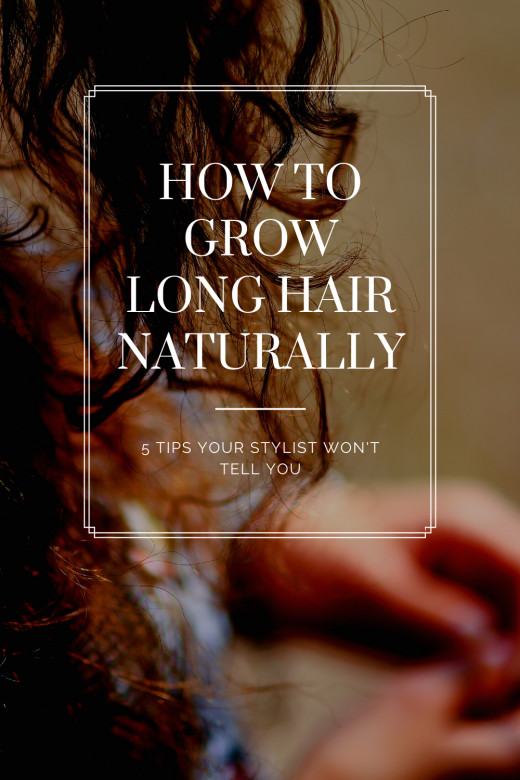
The biggest challenge in growing long, thick hair is damage.
To Grow Longer Hair, Take Better Care Of It
It goes without saying that taking better care of your hair will help you grow it longer. This can be a challenge, however, as the media, society, and trained stylists recommend treating your hair in ways which are actually damaging to the hair.
There are several things you should certainly not be doing to your hair if you would like it to grow long, thick, and healthy (and we'll talk about those in a moment), as well as things you should do to your hair to promote better quality.
Chances are, you're doing some of the things you should avoid, and not doing the things you should be doing.
To grow long and healthy hair, you need to stop doing things hair hates, and start doing things hair loves.
Guerrilla Hair Growth Tip #1: Stop Chemically Treating Your Hair
Your hair is made up of three layers: The cuticle, the cortex, and the medulla. Chemical treatments used on hair (such as bleaches and other chemical dyes) work by lifting the cuticle (which is like a series of scales which cover the hair's cortex) to allow the colorant or permanent solution to get in where it can do its work.
This weakens the strength and the integrity of your hair and leaves it dull, dry, and brittle. Healthy hair has a smooth cuticle.
The harsher the chemicals you use on your hair (such as bleach), the more damage you'll do to the cuticle and the more difficult it will be to strengthen the hair.
In addition, any permanent treatment you put on hair you hope to grow will have to be repeated for as long as you're growing your hair. When your hair is very long, you won't want only part of it to be colored or permed.
It is therefore best to remove whatever portion of your hair has already been chemically treated before beginning your natural hair growth journey.
Note: Hair which has been chemically treated is no longer "natural." You likely won't be able to sell your hair if you choose to cut it after it has been grown out.
Will My Hair Still Be Natural If I Heat Style Or Use Styling Products?
The styling products you put on your hair generally won't affect the cuticle and wash out with relative ease. They are generally not intended to change the chemical composition of the hair and are considered by most natural hair gurus to be "safe."
Heat styling is more complicated.
Heat over 450°F will damage the hair, making it brittle, dry, and broken. If you want to grow your hair long, you need to avoid it breaking. Experts therefore recommend your styling tools be set below 400°F. If your hair is already damaged, thin, or dry, you may want to keep your tools below 300°F.
You can use heat styling on your hair and it will remain "natural." However, you should be mindful of the damage, especially if you have a mind to sell or donate your cut hair should you decide to cut it.
Good for Hair
| Not Good for Hair
| May Be Good for Hair
|
|---|---|---|
Sebum (Hair Oil)
| Sulfates
| Sulfate-Free Shampoo
|
Apple Cinder Vinegar Rinse (1:12)
| Chemical Treatments
| Coconut Oil
|
Cool Water
| Heat Styling
| Cheap Conditioner
|
Note that heat styling can be used in moderation at a relatively low heat and do minimal damage to hair.
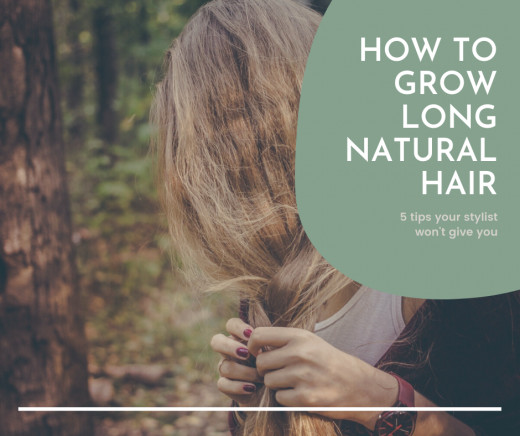
Hair may go through a period of transition when changing from shampooing to a no-poo method. It will get better!
Guerrilla Hair Growth Tip #2: Stop Shampooing Your Hair
Have you seen the trend for "sulfate-free" shampoos on the market? This is because the sulfates in your shampoo (the chemical which creates foam and washes away the oil and dirt from your hair) dry the hair, making it brittle and susceptible to breaking.
Sulfates are in a lot of soap-based products, and they aren't good for your hair or skin.
They act in shampoo by washing away the natural oils (sebum) from your hair. In addition, because they foam, they provide a natural "lift" to your hair you aren't as likely to get without sulfates or teasing.
Because sulfates dry your hair, they aren't good for it. Your hair should produce natural sebum to smooth the cuticle and keep hair strong. Shampooing, therefore, promotes hair breakage and acts as a chemical which alters the composition of your hair in ways which may be desirable for some, but not for others.
Regular conditioner (the cheaper the better -- which we'll discuss further down) or even plain water will rinse away the dirt from your hair while leaving the oils which strengthen and smooth your hair while making it shiny and luxurious.
Not shampooing your hair is the #1 way to change its texture for the better. You'll want to read the warnings at the bottom of this page, however.
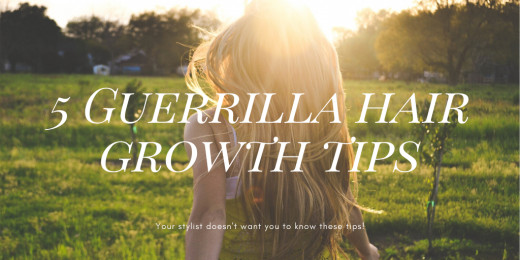
Guerrilla Hair Growth Tip #3: Rinse Hair With Vinegar
Once hair has been cleaned (regardless of method - shampoo, baking soda, pure water, or conditioner), it should be rinsed with a mixture of 1:12 apple cider vinegar:water. Both vinegar and water in this mix should be cool for best results.
Apple cider vinegar improves hair by balancing the PH of your scalp and hair, smoothing the cuticle, and adding shine to your hair. Contrary to what many believe, the acid in the vinegar is good for your hair, provided you use it diluted.
In addition, an apple cider vinegar rinse stimulates hair growth at the follicle.
If you want to grow hair fast and strong, an apple cider vinegar is one of the best tips any hair guru can provide.
Simply mix one part apple cider vinegar with 12 parts cool water (as cold as you can stand it) and pour over your head. There's no need to rinse it out. The vinegar smell will disappear once your hair has dried.
Learn more about the benefits of apple cider vinegar for hair.
Guerrilla Hair Growth Tip #4: Stop Brushing Your Hair
While you don't have to stop brushing your hair entirely, brushing with a plastic brush tears and breaks the hair, especially where it's tangled.
The purpose of brushing the hair is to spread the sebum from the scalp through the length of the hair. This is how brushing creates the shine you're familiar with. However, many people use their brush to detangle their hair. Using a brush for detangling, especially when the hair is wet, breaks hair and leaves it damaged and ragged.
Instead, finger-comb your hair to detangle it as much as possible, then use a wide-toothed comb to finish the job. Ideally, do this before and after washing the hair. If hair is particularly tangly, a mixture of cheap conditioner and water will act as an inexpensive detangling solution.
For oil distribution, try a boar bristle brush like the one in this set and run the brush over detangled hair from roots to tips. This will leave your hair shiny without creating new split ends.
Hair stylists are trained, in part, to sell more products. Whether knowingly or not, they may recommend products which are bad for your hair because it's good for their company or school.
Guerrilla Hair Growth Tip #5: Use "Cheap" Conditioner
Your stylist won't tell you this, but the best brands of conditioner you can use for your hair are the least expensive at the store. Suave (Green Apple is the best, followed by Coconut) and VO5 conditioners are among the simplest in chemical construction and therefore the best for your hair.
What you're looking for is a conditioner which doesn't contain 'cones (which include amodimethicone and dimethicone). 'Cones smooth the hair and make it shiny, but they leave a residue on the hair which requires clarifying. While the apple cider vinegar rinse previously described will help with clarifying the hair, 'cones can also damage the cuticle, especially on chemically-treated hair.
It is best to avoid putting 'cones on your hair at all, and the lest expensive conditioners are the best for growing long, natural hair. This means you can save money and get the results you've been looking for -- but your stylist will never tell you that.
Expect Changes When Growing Natural Hair
Your hair will change when you employ natural hair care techniques. Its texture will change and it will likely grow more quickly. It could become thicker.
In many cases, hair becomes more curly when cared for naturally. Even if you're accustomed to pin-straight hair, it may wave or curl as a result of using these methods. This is your hair's natural texture! In other cases, hair which typically waves may become straight.
Caring for your hair naturally restores the hair to its natural texture.
Bear in mind, this is most useful if you first remove any portion of your hair which has been chemically treated with chemical dyes or permanent waves.
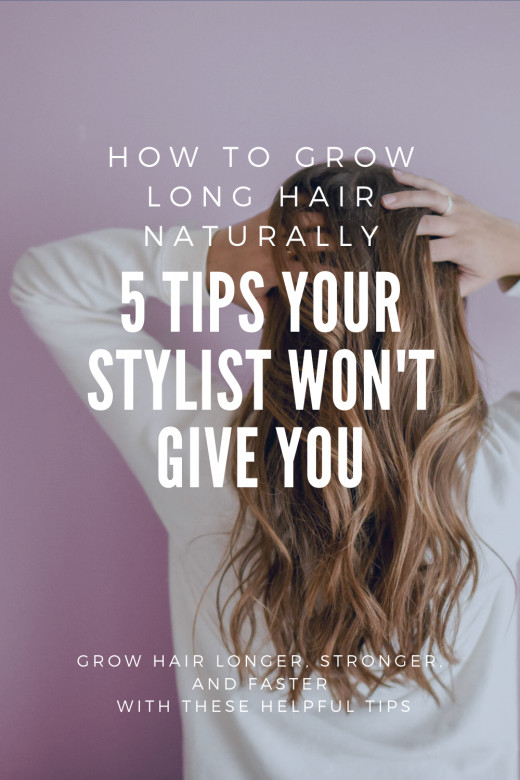
This content is accurate and true to the best of the author’s knowledge and is not meant to substitute for formal and individualized advice from a qualified professional.
© 2020 Rebecca Rizzuti

